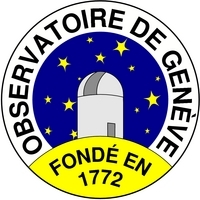
| INTEGRALPlanckGaiaPOLARCHEOPSEuclidATHENA |
| HEAVENSFACTCTALOFTSPICAJEM-EUSOXIPEeXTPTheseus |
| XRISMMAGBOUNDSMARTNet |
| ISDCCDCI |
| Data Centre for Astrophysics Astronomy Department of the University of Geneva |
Thermodynamic properties of the virial region of galaxy clusters
| Galaxy clusters are still forming in their outer regions through the accretion of smaller structures (galaxies, groups). Using a combined X-ray (ROSAT) and Sunyaev-Zel'dovich (Planck) data analysis, we determine the thermodynamic properties of a sample of 18 galaxy clusters and constrain the current mechanisms of structure formation. We find that in unrelaxed clusters non-thermal effects (cosmic rays, turbulence, magnetic fields) and/or gas clumping play an important role, while relaxed cool-core clusters follow closely the predictions of gravitational collapse. |
|---|
ABSTRACT
We measure the thermodynamic properties of cluster outer regions to provide constraints on the processes that rule the formation of large scale structures. We derived the thermodynamic properties of the intracluster gas (temperature, entropy) by combining the SZ thermal pressure from Planck and the X-ray gas density from ROSAT. This method allowed us to reconstruct for the first time temperature and entropy profiles out to the virial radius and beyond in a large sample of objects. At variance with several recent Suzaku studies, we find that the entropy rises steadily with radius, albeit at at a somewhat lower rate than predicted by self-similar expectations. We note significant differences between relaxed, cool-core systems and unrelaxed clusters in the outer regions. Relaxed systems appear to follow the self-similar expectations more closely than perturbed objects. Our results indicate that the well-known entropy excess observed in cluster cores extends well beyond the central regions. When correcting for the gas depletion, the observed entropy profiles agree with the prediction from gravitational collapse only, especially for cool-core clusters.
| by Dominique Eckert on 2013-01-07 | >> Galaxy cluster science results | >> All science results |







